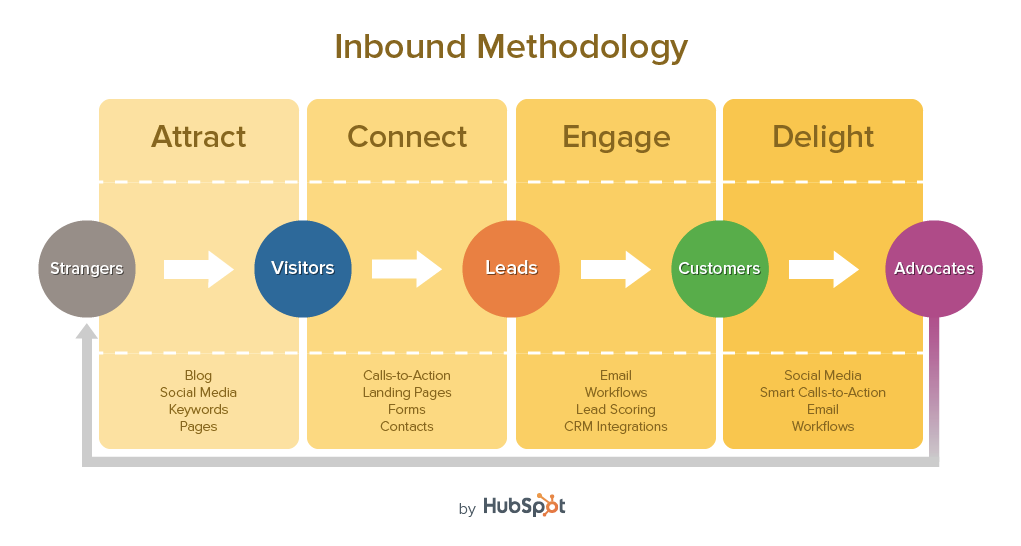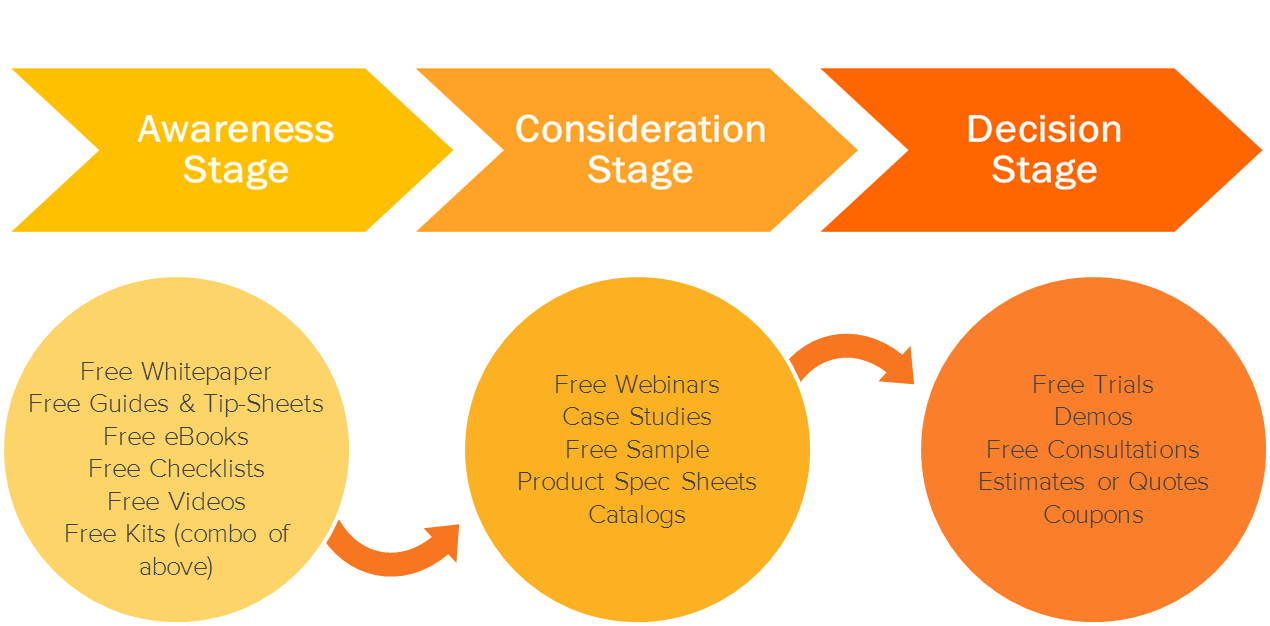How to Create Content for Every Stage of the Buyer’s Journey
Your customer sees the product. Your customer buys the product. Is that what a typical sale looks like for your business? This is a highly unlikely customer journey, even for whales like Amazon.
From the consideration stage to the decision stage, you want to produce content for the entire customer journey. While there will be some cases where a customer is actively looking for an immediate solution, most people go through what we know as a sales funnel.
Sales funnels are put in place to keep people engaged, informed, and in the loop with our products and services. When the customer is ready to buy, we want to be the one to sell them the product or service.
Creating Content to Nurture and Convert Potential Clients
How do we know what to say to our budding potential customers? What do they need to know before they decide to buy from us? If you try to take on the whole process at once, it is easy to feel overwhelmed.
The best way to approach content marketing is by breaking the content you need down and placing them into categories. The content you are creating needs to speak to each stage in the buyer’s journey. If you forget content for any part of the buyer’s journey, you will have a crack in your funnel.
What Is the Buyer’s Journey?
Before we talk with you about the how-tos, it is important you understand what the buyer’s journey is and how effective your team is at effectively moving prospects through each stage in your sales funnel.
In most cases, there are three stages of the buyer’s journey funnel. These sections are awareness, evaluation, and purchase. Depending on your company, industry, and other factors, your funnel may look different, but this is the most common buyer’s journey.
1. Understand Your Buyer Personas
Before you get excited and start throwing content on the web, your company needs to develop a clear understanding of your audience. Knowing some people want to buy your product is not enough. You have to understand who they are and why they need what you have. You want to understand what questions and concerns they will have along the way. Your content at each stage of the funnel needs to speak to pertinent pain points of your ideal prospects and addresses how your solutions help reduce or eliminate their sales and marketing obstacles.
The best way to understand your audience is by developing a customer persona for your audience. A customer persona is a carefully crafted imaginary person to represent your target market. You want to feel as if you are talking about a real person when you describe this customer persona.
If you have to choose which part of the process to spend the most time on, you should spend the most time understanding your audience and learning how you can help them rather than worry about their purchasing decision. Having a thorough understanding of whom you are talking to will play into every piece of content you create. Not understanding your ideal client or not fully understanding what drives your prospects to a buying decision can wreak havoc on your revenue growth potential.
2. Content for Each Stage of the Funnel
After you’ve made sure that you’ve properly crafted your customer persona, it is time to work on the content for each stage in the buyer’s journey. below is a diagram how what HubSpot marketing tools and tactics are most effective at each stage of the buyer’s journey.
3. Awareness Stage
The awareness stage is where you cast the wide net. Your goal is to reach as many people as possible that are researching your industry. These people are further away from the purchase cycle but can somettr4imes jump right over into the last stage of the funnel.
Your sales funnel isn’t an exact path to sales but it is the most common one and having it in place ensures you can market and sell as effectively as possible.
In the awareness stage, your goal is to get your eyes on your content. This content should be helpful content that builds trust with your new visitor. You might create blog posts, ebooks, or white papers for this stage but all of them need to be high-level information that new visitors can benefit from reading. Where most companies fall short is failing to create and deploy content offers at each stage of the funnel.
You might opt-out of creating written content for the awareness stage and go for video or audio like podcasts. Whatever medium you use, your goal is to build awareness and trust with your potential customers.
4. Evaluation Stage
When people get to the evaluation stage, they’ve already figured out they need a product or service like yours. Now they are trying to determine which product or service they want to use. This part of the funnel is where you need to put some of your marketing genius to work to communicate the value of your product or service and why they should work with you.
Blog content is great for the awareness stage, but now your company needs to start walking them through the process into deeper forms of content. The evaluation stage is where they will begin to take options off the table. If your content isn’t painting your product or service as the best solution, you may lose them at this stage.
Guides, webinars, live chat, sales call engagement and other interactions with the customers will make it more likely that they will stay in the funnel to move on to the next stage.
5. Purchase Stage
If you’ve done the work and got potential customers to this stage – good work! We are sure this took a lot of effort, but you have not quite hit a home run yet.
Bottom of the funnel, purchase stage content might be a sales page with a call to action, free trial offer, demo offer, or a request for an estimate. If your potential client lands on these pages before they are ready, they will be blown away. If you’ve crafted your content properly in the awareness and evaluation stages, this is the next natural step they will take in their journey.
Conclusion
Understanding your customer and creating content to walk them through each stage in the funnel is key. Sometimes these tasks can seem like a burden because you have other things to do like growing your sales revenue and increasing profit margins. Don’t worry – we have you covered. While your in-house team can no doubt execute tactical such as blog posts, social media posts, and marketing emails, they may not be mapping content to each stage of the buyer’s journey. That is where partnering with a certified HubSpot partner agency can offer an outside content marketing analysis with candid feedback and offer actionable insights to help better create and map content to each stage of your buyer’s journey.



